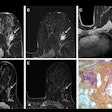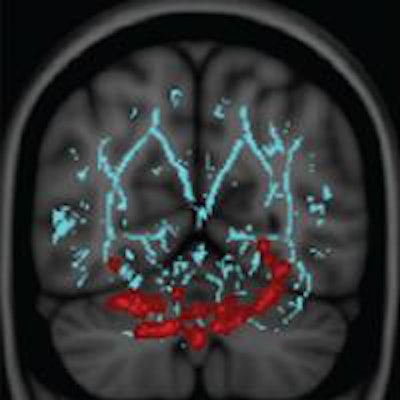
Researchers using diffusion-tensor MRI (DTI-MRI) believe they have identified parts of the brain that cause people with mild traumatic brain injury to become dizzy or have vision problems, according to a study published online April 15 in Radiology.
The condition is called vestibulopathy. Patients with mild traumatic brain injury (TBI) and vestibular symptoms had lower fractional anisotropy values in the cerebellum and fusiform gyri than control subjects with no symptoms, wrote a team led by Dr. Lea Alhilali, an assistant professor of radiology at the University of Pittsburgh Medical Center (UPMC).
The group used fractional anisotropy values from DTI-MRI to measure damage to the brain's signal-transmitting white matter. The lower the fractional anisotropy, the greater the damage to the tissue.
"The importance of this paper is that previously people thought that dizziness after a concussion was caused by injury to the inner ear," Alhilali told AuntMinnie.com. "Because the MRI looked normal, no one suspected anything in the brain. Showing that there is an injury to the brain itself in these patients is an important finding in terms of understanding the etiology of the symptoms."
Vestibulopathy and DTI-MRI
Vestibulopathy can be extremely debilitating for patients with mild TBI, according to Alhilali.
"It also puts them at increased risk for another injury," she said. "It can be debilitating in terms of everyday function of living, one's ability to return to work, or if a patient is an athlete, it is difficult to return to sports."
The current study follows previous research published last year by Alhilali and colleagues; in the earlier study, they found that sleep-wake disturbances in patients with mild TBI correlated with abnormalities in the parahippocampal region of the brain (Radiology, October 2013, Vol. 269:1, pp. 249-257).
"After a concussion, many patients [experience] different symptoms; some will have very bad migraines, some will have very bad dizziness," Alhilali said. "So we were wondering if it is all the same injury in each patient and it manifests itself differently, or if there are unique injuries for every single symptom. And if you get a certain injury, would you get a certain symptom."
For the new retrospective study, the researchers included 69 patients with mild TBI who ranged in age from 10 to 38 years. Thirty of the patients had vestibulopathy, while 39 patients who did not served as a control group. In addition, of the 69 patients, 25 had a condition known as ocular convergence insufficiency, in which the eyes do not turn inward properly to focus on a nearby object; 17 patients who had normal convergence served as a control group (Radiology, April 15, 2014).
For the vestibulopathy cohort, the median time from injury to clinical presentation was 22 days (range, 1-486 days). The most common cause of trauma was a sports injury, followed by a motor vehicle accident. In the convergence cohort, the median time from injury to clinical presentation was 20 days (range, 1-486 days).
DTI exams were performed on a 1.5-tesla scanner (Signa, GE Healthcare) with a standard head coil. DTI is key to finding brain abnormalities because conventional MRI is not sensitive enough to detect postconcussion injuries, Alhilali said.
Put simply, DTI shows connections in the brain's white matter. "It is sort of the 'telephone lines' between different parts of the brain, and you can detect injuries to these connections," she explained. "Even though you may not see the abnormality on a regular MRI, with diffusion-tensor imaging you can see where these connections have been injured."
DTI comparisons
When they examined the DTI-MRI results, the researchers found that patients with mild TBI and vestibular symptoms had decreased fractional anisotropy values in brain regions not previously suspected to be involved in post-traumatic vestibulopathy.
"Interestingly, the reason that the symptoms were different between concussion patients with and without vestibulopathy was in the cerebellum, which is the part of the brain that is vital for balance," Alhilali said. "Also it was in the fusiform gyrus."
A region of the brain that integrates vision between the left and right eyes to create a 3D visual field is in the fusiform gyrus. "So both of these regions help to explain why these patients are having the symptoms," she added.
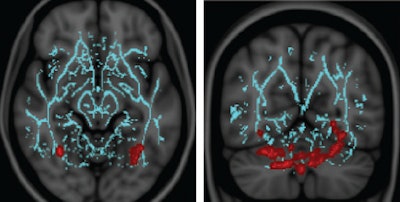 Vestibular abnormalities correlated with decreased fractional anisotropy values in cerebellar regions responsible for sensorimotor processing and central and/or axial balance, as well as the fusiform gyrus, which is responsible for visually guided locomotion and stereoscopic vision. Above are DTI coronal (left) and sagittal (right) views of the fusiform gyri. Images courtesy of Radiology.
Vestibular abnormalities correlated with decreased fractional anisotropy values in cerebellar regions responsible for sensorimotor processing and central and/or axial balance, as well as the fusiform gyrus, which is responsible for visually guided locomotion and stereoscopic vision. Above are DTI coronal (left) and sagittal (right) views of the fusiform gyri. Images courtesy of Radiology.Breaking new ground
The study's findings could potentially change the clinical management of vestibulopathy in mild TBI, which "previously lacked both an understanding of the central component of the underlying injury, as well as biomarkers to aid in prognosis," the authors wrote.
When patients first present after a concussion, their complaints are not usually focused on cognitive symptoms. They often complain of headaches, dizziness, or vision difficulties, about which there is little previous research, Alhilali said.
"Everyone is focused on cognitive deficits," she added. "Basically, they have these patients after the concussions take these tests and try to see which parts of the brain correlate with poor performances on these tests. But we feel that if we are really going to treat the issue, we have to focus on the symptoms that the patients are reporting."
While the 2013 study found a possible link between sleep-wake disturbance and Alzheimer's, Alhilali said there was no such correlation between the disease and vestibulopathy.
"Sleep-wake disturbances are often one of the earliest signs of Alzheimer's before cognitive impairment," she said. "For vestibulopathy, it did not look like the pattern you would see in Alzheimer's ... which seems to make sense, since there is not a big component of dizziness in terms of Alzheimer's symptoms."
Treating vestibulopathy
One of the researchers' goals is to develop DTI as a way to diagnose patients with concussions to predict their symptoms. Through the scan, physicians may be able to predict that an injured region of the brain is related to a certain symptom.
"Therefore, we can use imaging to make an earlier diagnosis before the patient is symptomatic and we can get them into rehabilitation therapy," Alhilali said.
The UPMC group would like to conduct a prospective study to see if detecting injury in these regions of the brain will predict future symptoms.
"The question is: If we find it in a patient who has yet to present with dizziness, and we image them right after the concussion and there is injury in this region, will they move on to develop dizziness?" she said. "We would like to see if we can predict the symptom in patients in a prospective trial by matching their injuries with injuries that are known to cause specific symptoms."
Alhilali and colleagues also want to investigate other symptoms to see if they are related to specific brain injuries. Preliminary research is underway exploring neuropsychiatric symptoms, migraine headaches, neck pain, and peripheral skin disturbances, for example, to see if there are unique brain injuries related to the symptoms.
"It is important for patients with concussion to realize that these symptoms are serious," she concluded. "They may think that it is only some dizziness, and they try to just work through it, but it is a serious injury in the brain itself. It is not something that should just be blown off. Dizziness is not merely a peripheral symptom but actually may indicate a more serious injury to the brain."


.fFmgij6Hin.png?auto=compress%2Cformat&fit=crop&h=100&q=70&w=100)



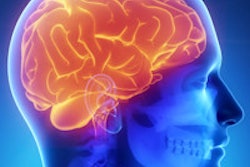
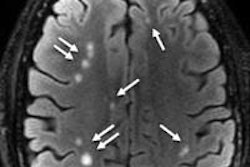
.fFmgij6Hin.png?auto=compress%2Cformat&fit=crop&h=167&q=70&w=250)


